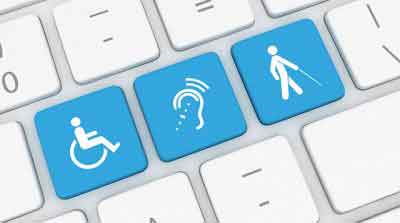4 Advantages of Accessibility Testing for Web and Mobile
Accessibility is the next frontier for website and mobile apps. The hundreds of millions of people who are visually, hearing, or mobility impaired have limited access to online resources and technology. Accessibility testing determines how well your app can be understood, navigated and used, regardless of the technology or platform used to access it. Not only can accessibility testing improve your app, it can also give you a headstart on your competition.

1. Accessibility Testing can Expand Your User Base
Reducing time to market is key for mobile apps, but it’s no excuse for pushing accessibility features to the end of your development process. Adding accessibility late in the process invites the problems and costs often associated with new features and bug fixes.
The Microsoft Edge browser offers a cautionary tale here. Even after years on the market, the Edge browser isn’t accessible to blind users. “Fixing” accessibility issues at the end of the development cycle is monstrously expensive, which may explain why Microsoft suggests that the blind community use its Internet Explorer browser over Edge.
True accessibility means expanding, not shrinking, your user base.
2. It Pushes Your App Beyond Compliance.
The U.S. government has requirements and guidelines for the accessibility of information and communications technology and telecommunications equipment. Section 255 is part of the Communications Act of 1934, and Section 508 is short-hand for the Workforce Rehabilitation Act, which went into effect in 2001. Both were updated in 2017 to ensure that federal agencies meet accessibility standards in the procurement, use, maintenance, and development of various communications devices and technology.
However, an experienced accessibility testing company will likely tell you that compliance isn’t enough. Despite setting standards for accessibility, the government doesn’t require testing using assistive technology. In fact, your app may be Section 508 compliant while presenting a highly negative user experience when interacting with a screen reader.
Working with a U.S.-based company for website or mobile app accessibility testing can help ensure that your app goes beyond compliance by also incorporating common sense accessibility options.
3. It Enhances Automation
If you develop an app that works with accessibility, it also improves automation because many UI automation hooks are the same. Decorating controls properly for test automation means they’re decorated properly for accessibility.
Let’s say you’re developing a YouTube app. If you don’t have a button decorated properly for automation, it will just appear on a screen reader as “button.” A properly decorated button will announce to accessibility and automation technologies that this is a “play button.” The use of alt text to add descriptive information to controls can enhance both accessibility and automation.
4. It Defines “Disability” Broadly
“Disability” doesn’t pertain strictly to permanent physical impairment. It covers cognitive, behavioral, and learning challenges, too. Added to these categories are people who are temporarily unable to complete routine tasks due to illness or injury.
If you’re a programmer with a broken hand, you’ll be typing with one hand unless you can access your computer, tablet, or phone using one of the many assistive technologies available. A qualified website accessibility testing company can ensure that your app defines “disability” broadly in order to serve as many users on as many devices as possible.
If you’re willing to push your app beyond basic standards of accessibility, you could be one of the early settlers—and market leaders—on the new frontier of accessibility.